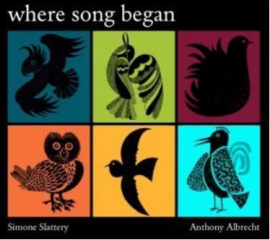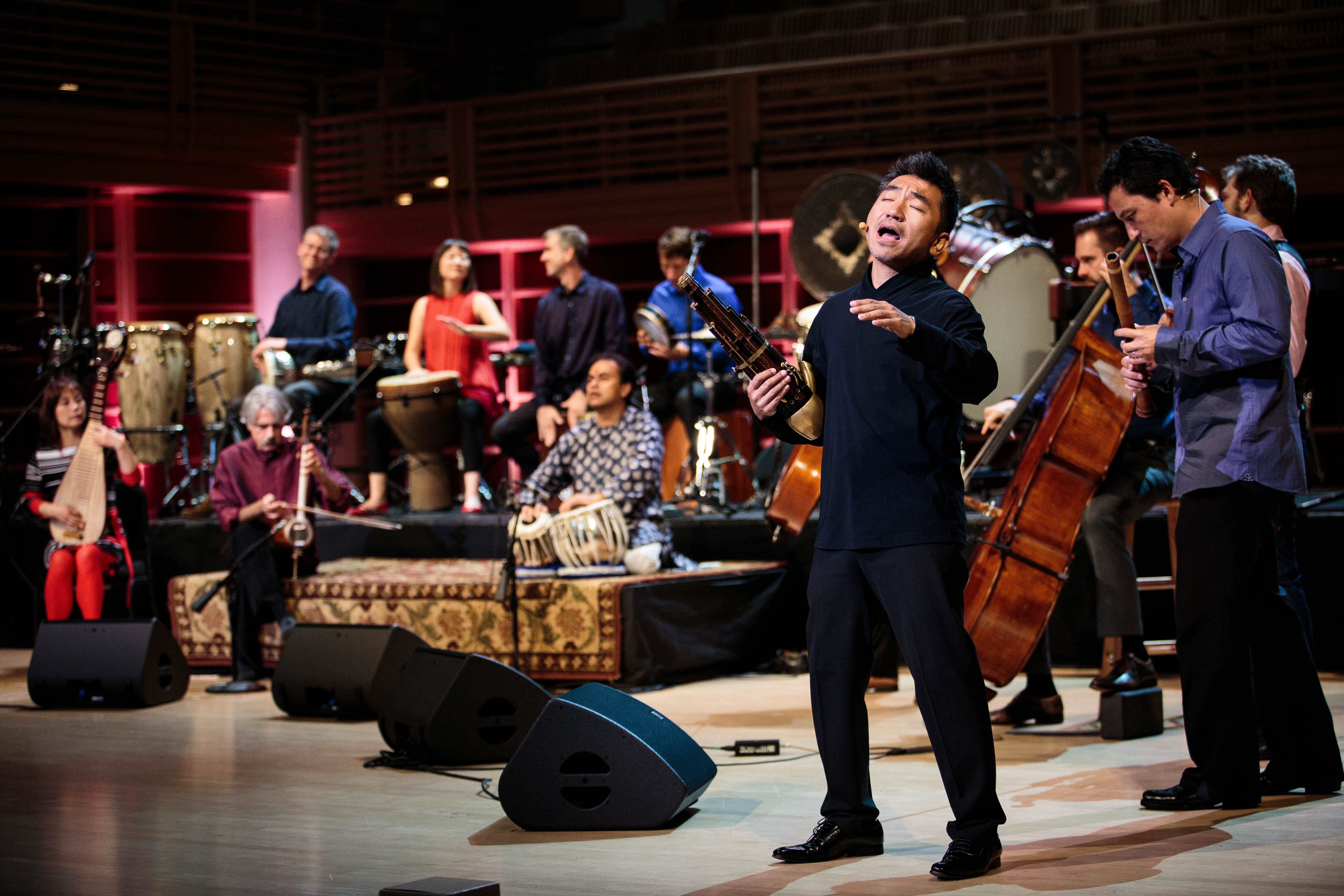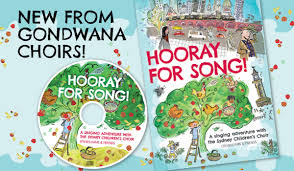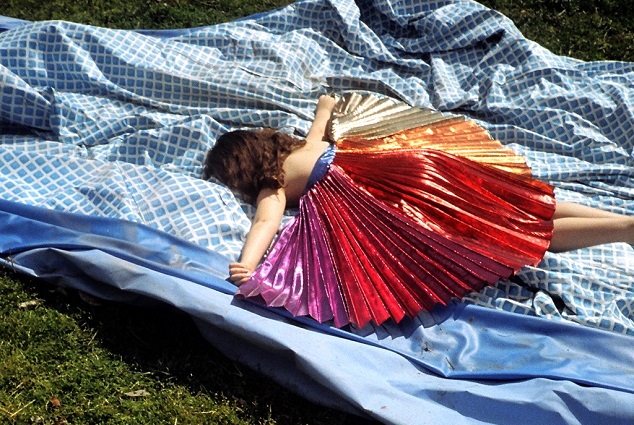Album review: Where Song Began/ Bowerbird Collective

First, there was birdsong. Then, as humans began to generate music, birdsong became a source of thematic material from as early as Janequin’s four-part chanson Le chant des oiseaux (c1559). As music evolved, composers described birds in music and replicated their sounds; birds have been an inspiration in madrigals and folk songs and in the music by composers from Monteverdi and Vivaldi, to Beethoven, Delius, Mahler, Granados, Messiaen and numerous others.
A new CD release from the Bowerbird Collective where song began, brings a creative new perspective to the combined aesthetics of instrumental music, voice and birdsong. This collaboration amongst violinist and vocalist Simone Slattery, cellist Anthon Albrecht and ornithologist Tim Low, with sound recordings by Andrew Skeoch, Sue Gould and Ann Jones and photography by Muneer Al Shanti, transcends boundaries. What they have created is a document that is also a work of art; a transfixing soundscape that embraces cultures and ages, the composed and the improvised, the indigenous and the stylised and which highlights the utterly unique birdsongs of Australia.
Cuckoos and nightingales have for too long enjoyed an unfair share of the limelight in western music. where song began looks to the beauty of the sounds made by shrieking lorikeets, warbling magpies, black cockatoos, lyrebirds and a veritable of aviary of birdlife.
The 11 tracks add up to around 65 minutes of music. Opening the collection is Dawn Chorus, an excerpt from Arvo Pärt’s Fratres, with overtone singing. Escaping to the peace and solitude of the wilderness, it begins imperceptibly, as if waking at daybreak, the songs rising to a glorious avian choir of honey eaters, robins, pigeons and thrushes, recorded at Strangways in central Victoria. Fratres was written by Pärt without fixed instrumentation, the soaring bravura arpeggios taken on by the strings contrast with the sonorous simplicity of the overtone singing.
Reclaiming the Spirit by the Australian composer and cellist Sarah Hopkins, takes us straight to the throbbing red-centred heart of the nation. Composed for the 10-year anniversary of the renaming of Uluru in 1993, the cello’s dramatic double-stops comprising pedal point and melody, evoke the earthy sound of the didgeridoo.
Ralph Vaughan-Williams’ tone poem The Lark Ascending, is a cornerstone of the violin repertoire scored for solo violin and piano in 1914 and revised by the composer for solo violin and orchestra in 1920. It immediately conjures up in broad brushstrokes, the lark swooping over the verdant rolling hills of the English country side. In this excerpt, the sweet soaring violin melody is taken by the sonorous cello depicting Carnaby’s Cockatoos and “chattering Blue Wrens,” linking with the next piece, an excerpt from bird, song, seas by Chris Williams. Simone Slattery brings to life the wheeling and crying of gulls, with improvise bird calls and the gentle sounds of the sea while Anthony Albrecht plays a thrumming cello line of double stops. As the birds fade into the horizon, we are left standing on the shore at ebb tide.
Simone Slattery contributes two of her own compositions to this anthology. Swooping virtuosic arpeggios are the theme for her Improvisation on a Bowerbird’s Failed Courtship, bookending a central section which evokes a pastoral folksong and elements of Vivaldi. The incongruous “clicks and rattles” of the bowerbird’s seduction ritual, play in the background. In the Night is a serene assemblage of the sounds of darkness. A pedal point of cicadas and strings swell and recede against the calls of the Pied Butcherbirds of the Ormiston Gorge in the Northern Territory.
Ross Edwards’ Ecstatic Dances were originally composed for flute duet and later adapted for various other combinations of instruments, including string duet. Described by Edwards as “radiant and insistently melodic” the syncopated rhythms of the second dance draw together the chatter of budgerigars with indigenous Maninya beats.
A bracket of two pieces plays homage to the baroque pioneers. The CuCu Sonata by Schmelzer (1664) has, at its core, the haunting descending third of the cuckoo’s call. This is piece has, at times, charming and featherlight improvisations from the violin over a continuo-style cello; at other times, the two instruments are in dialogue. Complementing this, is the iconic Prelude from J S Bach’s Cello Suite No 1. Birdsong is only featured before and after the piece, allowing Anthony Albrecht to draw a pure resonance from his cello, exploiting the full range of Bach’s writing. He plays with slightly more rubato than might be expected in the style, underscoring leaping arpeggios, improvisatory passages and unexpected dissonances, giving flight to the prelude’s rising and jubilant conclusion.
Adelaide composer David John Lang’s commissioned piece Anthochaera carunculata is a representation of the Red Wattlebird. A piece driven by playful rhythms that maximise the technical and percussive properties of the violin as well as conventional bowing, it ends in a rapturous, swelling cacophony of birdsong.
The collection wraps up with Ngara Burra Ferra, an indigenous song of the Yorta Yorta peoples. The history of the song reaches back in time and is a translation into the Yorta Yorta language in 1886, of an ancient Jewish tale of the escape from slavery in Egypt. It features magpies and honeyeaters from Victoria, with the sultry vocals of Simone Slattery.
The booklet accompanying the recording has observations on birdlife from Tim Low, exquisite, vibrantly coloured imagery by Murni Al Shanti and passages of verse and prose from writers who include Siegfried Sassoon and Maggie Slattery.
Simone Slattery and Anthony Albrecht have extended the possibilities of their instruments, masterfully demonstrating just how intertwined are music and the sounds of nature, both in their origins and in the ability of the violin to recreate avian life in sound and movement. In the context of the current devastating bushfires and the catastrophic loss of wildlife, where song began could well become a critical archive.
Bowerbird Collective’s where song began offers serene listening and the opportunity to immerse yourself in nature – perfect for the deck or the garden at dusk with a glass of your favourite tipple – or a cup of bush tea.
Shamistha de Soysa© for SoundsLikeSydney
Available for purchase at
www.wheresongbegan.com/cdcheckout
Andrew Skeoch’s website www.listeningearth.com






